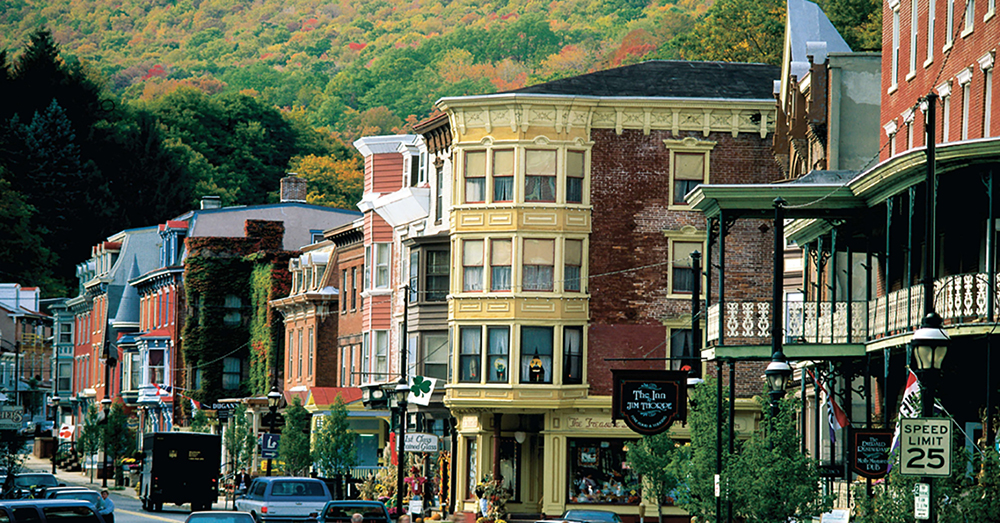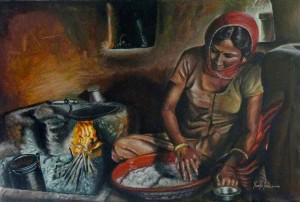Dear Artist,
Annelise Fleischmann was a teenage art student from a wealthy German-Jewish publishing family when Oskar Kokoschka saw one of her portraits and asked her why she painted. She promptly quit, applying instead to the experimental Bauhaus School at Weimar, where she was rejected and then accepted after a second try. Because women were barred from most classes there except for weaving, Anni reluctantly eased into textiles. “To work with threads seemed sissy to me. I wanted something to be conquered. But circumstances held me to threads and they won me over.”

Six Prayers, 1966–67 cotton, linen bast, silver lurex
186 × 48.9 cm each panel
by Anni Albers (1899-1994)
When she was 26, Anni married Bauhaus Junior Master Josef Albers, who was heading the glass studio. Her teacher, Paul Klee suggested his students “take a line for a walk” — and so she did — in thread, improvising and inserting textural and visual mystery into what had been considered an inferior art form. Through her interests in architecture, design and painting, Anni pioneered new forms of construction, bumping textiles from basic functionality to advancements in light reflection, sound absorption and durability, and in finding ways to control warping and wrinkling. She morphed between uncomplicated, criss-crossing weave patterns and complex, irregular compositions while experimenting with transparent cellophane, metallics, jute, horsehair and paper to amplify surface qualities and pictorial elements. Something began to shift — to blur and democratize the applied arts and fine arts in her creation of beautiful, inventive and useful things. By the time she was 32, Anni was heading the weaving workshop.
In 1933, as the Nazis were shutting down the Bauhaus, Modernist American architect Philip Johnson invited the Albers to teach at the experimental, idealistic and arts-driven Black Mountain College near Asheville, North Carolina. In America, Anni would teach weaving and textile design and create her own diverse body of work that included drawings, wall hangings, curtains, bedspreads, pictorial works and mass-produced material, often inspired by her extensive travels and collecting. She deconstructed traditional Mexican and Peruvian textiles to understand how their designs were planned while also riffing on the cool rhythms of modernism and playing at the most futuristic possibilities of her medium. “A longing for excitement can be satisfied without external means within oneself,” she wrote. “For creating is the most intense excitement one can come to know.”
Sincerely,
Sara
PS: “Being creative is not so much the desire to do something as the listening to that which wants to be done: the dictation of the materials.” (Anni Albers)
Esoterica: Anni came to call weaving “a many-sided practice,” making it her own and advancing the art form. “Most of our lives we live closed up in ourselves, with a longing not to be alone, to include others in that life that is invisible and intangible,” she wrote in her 1982 essay Material as Metaphor. “To make it visible and tangible, we need light and material, any material. And any material can take on the burden of what had been brewing in our consciousness or subconsciousness, in our awareness or in our dreams.” At 64, Anni took up printmaking, and began to focus heavily on lithography and screen printing. Josef, who had become the chair of the design department at Yale, died in 1976. Anni continued to work and exhibit until 1994, when she passed away at the age of 94.
“You can go anywhere from anywhere.” (Anni Albers)
Sara Genn: New Alphabet is on view until October 17th, 2019 at Dimmitt Contemporary Art, 3637 West Alabama Street, Houston.
 The Letters: Vol. 1 and 2, narrated by Dave Genn, are available for download on Amazon, here. Proceeds of sales contribute to the production of The Painter’s Keys.
The Letters: Vol. 1 and 2, narrated by Dave Genn, are available for download on Amazon, here. Proceeds of sales contribute to the production of The Painter’s Keys.
“Besides surface qualities, such as rough and smooth, dull and shiny, hard and soft, textiles also includes colour, and, as the dominating element, texture, which is the result of the construction of weaves. Like any craft it may end in producing useful objects, or it may rise to the level of art.” (Anni Albers)
Featured Workshop
Join David Beale for his annual fall water media workshop sponsored by the Picture House! This year we will paint in the scenic Southern slopes of the Poconos around the town of Jim Thorpe, PA. The dates are from Friday, October 11 to Wednesday, October 16, 2019.
The workshop will be taught by David Beale, popular watercolor instructor and owner of the Picture House. See David’s work at davidbealeart.com
David has taught workshops across the United States and abroad throughout Ireland, on Lake Como in Italy and in Barcelona, Spain.
For details, see Painting Autumn in the Poconos.
Featured Artist
I, Ramya Sadasivam, have been practicing art since 2006. I so love to portray Indian culture, customs, day to day chores of the hard-working laborers, happy village life and life of women. I love to capture the difference in values between the shadows and bright light and also I like to capture genuine emotion.








13 Comments
How fortunate for us that Anni Albers believed and practiced her belief that “You can go anywhere from anywhere.”
Thank you Sarah for sharing her work and wisdom.
I love that quote of Anni’s. Being free to enter the flow and be carried through to our creative destinity..
Had I started visual arts as a young man, I would undoubtedly had a relationship with textiles beyond wearing and living close with them. I had the opportunity at 70 to attend a serious art programme and was free to choose courses and direction.
Your article spurs me on to use that freedom and choice with gratitude and more determination as a drawer / painter of things I love. Including humanity.
Thank you Sarah.
Don M. Duncan BC
Hi Don, I can see that your reply was meant for Sarah even though it is in reply to my comment. However, I thought I would take a moment to introduce myself because we live in the same general geographical location. I live on Mayne Island in B.C. – the southern Gulf Island with the light house has you enter Active Pass from the Strait of Georgia. So this is me waving the short distance between us as the crow flies.
Aren’t we lucky that she gave up easily and went a different direction. Unusual to switch schools just because someone asks why she paints…
Sara,
Thank you for another beautiful letter. As a female artist, it is inspiring and affirming to have women’s careers highlighted here. Enjoyed seeing the photos of your solo show online, too! So proud of you and happy for you!!!
Very interesting. Thank you for this letter. I am impressed with her work, and her story. How lucky she escaped Germany at that time. How scary was it that so many knew what was about to happen!!
I had the pleasure to lead an Elder College course on Art in the 21st Century. At the first session, I asked the participants is there was any special topic they would like to include. There was a general wish to have a session on Fibre Art. Unfortunately Anni Albers didn’t make it to the 21st Century. She would definitely have been an artist to explore in that class.
Thank you so much for sharing her wonderful story. “You can go anywhere from anywhere.” You just have to start from where you are!
I can see how her work was/is an inspiration for yours, Sara. Thanks so much for the great post.
Dear Sara,
Thank you for the most interesting letter on Anni Albers. It has inspired me to read more about her and to share some of her inspiring story on the art of working with textiles with some of the artists in my community.
Great post as usual.
Always enjoy the letters.
Anni Albers has been a guiding star for me as I weave copper sculptures. It shows that even progressives like the Bauhaus were sexist. But because Anni was not deterred, just detoured, she expanded and elevated a “lowly” craft into Art with a capital A.
Sara, thank you. I love this letter.
As a male fiber artist this is just so interesting to me. The Fine Arts. The (potentially but not necessarily functional) Decorative Arts. The GREY AREA. The sexism. From the men. And Ms Albers herself. The judgment (both for and) against Fiber. The use of the word SISSY.
After learning to sew at 8- doing knotting and art embroidery in my teens- taking clothing design classes in my only year in college- what I discovered that year was that you had to be a junior to even get into weaving (the UofU’s only fiber class). I love woven things and have immeasurable respect for weavers- but I hate weaving. Why? Because I like to chop things up and put them back together. To build things. Which is fundamental to how I view process. Weaving is a very different process.
But frankly- as a Fiber Artist I’ve just spent decades experiencing discrimination (by artists in general) and even by female fiber artists- because I’m not one. I’m male. And as a male I’ve discovered that I am (supposed to be) the most privileged person on earth. Yet- my experience has been one of being on the outside. Of every group. No matter what.
Sissy is a trigger word. It’s usually directed at boys/men who just aren’t quite masculine enough. Here Ms Albers- herself- uses it to describe the (more female) Decorative Arts. Weaving. She wanted something to conquer. Something more masculine. She’s relegated (forced) to accept weaving. She herself is judging weaving as somehow less than- less masculine than painting. So we can all applaud her eventual acceptance of the less attractive less worthy (sub-human) art medium known as Fiber- Weaving. And we can praise her for being a participant in weaving’s eventual elevation into the Fine Arts. Even though she actually made (swear word) Bedding.
I still see genderism everywhere. Even as we hopefully move towards gender irrelevancy as it relates to LIFE CHOICES- there’s still masculinist and feminist traditions and dysfunctional behavior patterns everywhere. And people are still being judged for not towing the status quo gender line.
ANYBODY can do anything- be anything- use anything they want- and a perceived gender (which can influence your work) can no longer be held against you- and judged. That paradigm is dead.
J. Bruce.
Keep strong and be true to
your vision… that’s all we can do.
And it’s all that matters in the end – and
to create some great work of course!
Samere Tansley